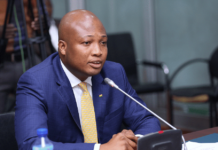
Ghana’s insurance sector has experienced rapid growth, with the sector’s value reaching $600m in 2018, up from $400m in 2014, according to accountancy firm Ernest and Young (EY).
The main growth drivers have been improved economic conditions, increased demand from the emerging middle class and insurance providers selling innovative products such as micro-insurance. Insurance firms in this West African nation seem to have succeeded in developing products which appeal to customers who had shunned insurance in the past.
For example, MicroEnsure has partnered with mobile service providers to offer free basic life and health insurance coverage as a way to identify potential clients for other insurance products. This type of product innovation has been responsible for the upswing in the sector despite economic fluctuations, according to Gifty Alabi-Fiagbe, CEO of Saham Life Insurance Ghana.
“Over the last three years, investment indicators have been favourable to us, but this year, with the huge dip in interest rates, we could have had some problems had we not invested correctly,” she says. “We’ve created a variety of products which have allowed us to spread the risk, and we’ve also made huge strides in targeting those in the informal sector.”
Despite the upturn over the last five years, insurance premiums still only account for just over 1.17% of Ghana’s GDP and only one in 10 Ghanaians have some form of insurance.
The industry regulator, the National Insurance Commission (NIC), has targeted penetration yielding 10% of GDP by 2021 by supporting the development of insurance products including micro-insurance and bancassurance. The Commission, led by Justice Yaw Ofori, is keen on overhauling the insurance sector by updating the 2006 Insurance Act.
The changes to the legislation include provisions to strengthen the Commission’s powers, building local capacity while potentially sidelining foreign firms and doubling the minimum capital requirements for insurance companies from C15m ($3.35m) to C30m.
However, some insurance companies have voiced their displeasure at the proposed changes, according to Alabi-Fiagbe. “We’ve had discussions with the new regulator and I understand that he wants to make his own impact, but at least three prominent voices in the industry that I have spoken to have told me they are not comfortable with the new direction,” she says. “As an industry, we hope, as we did before, that we can have our say to ensure that our growth isn’t stunted by the new rules.”
Even with the uncertainty surrounding regulatory changes, insurance companies remain bullish about growth continuing, especially when you consider the number of uninsured people in the country. However, there are concerns that the industry is oversaturated with market participants, which is leading to needless competition and undercutting of rates.
Increased competition
According to the NIC, there are 22 life insurers and 27 non-life insurers in Ghana, with an additional three reinsurance companies. However, Ghana’s population is only around 28m people, with over 55% 25 years old and under.
Previously insurance companies in Ghana had been allowed to offer both life and non-life products, but the 2006 Act banned companies from operating in both segments and composite companies were forced to split up. Brokers and agents, who act as intermediary between the insurance firms and the customers, number more than 72 different firms, accounting for almost half of the market share in terms of sales.
They collect between 10-21% in commission, depending on the type of insurance being purchased. The large number of brokers has contributed to a depression of premium rates, despite the NIC introducing minimum premium guidelines in 2017, according to Nathan Adu, president of the Ghana Insurance Brokers Association (GIBA) and managing director of Akoto Risk Management.
“Undercutting is one of the biggest challenges we face, especially in the area of non-life,” he says. “Clients are playing brokers against each other to drive premiums down below the rates the regulator has prescribed. This is leading to a race to the bottom with most brokers preferring to do some business rather than no business at all.”
The phenomenon is not only restricted to brokers, with some underwriters also complaining about the practices of their counterparts. Enforcing the minimum premium guidelines has proven to be a challenge for the Commission as insurance firms and brokers find ways to circumvent the regulations.
No premium, no cover
However, one area of success for the NIC was the introduction of the ‘no premium, no cover’ (NPNC) clause in 2014, which helped boost liquidity across the sector. The ‘no premium, no cover’ policy stipulates that customers must pay the full policy premium before coverage begins. Prior to its implementation, insurance firms would provide a line of credit to customers who wanted to pay their premiums in instalments. This created a credit risk for the insurance firms and limited liquidity.
When the policy was introduced, there were concerns that customers, especially those from low-income families or informal workers, would be put off from purchasing insurance because of the potential costly initial outlay. However, the strong growth of the industry shows that customers are embracing the policy, according to Stephen Kwarteng, general manager of Marine General Brokers.
“I have worked in the industry for about 12 years and I think the policy is one of the best things that has happened to us,” Kwarteng says. “One of the reasons penetration is so low is because public confidence in insurance is low – people think that insurance companies take premiums and then renege on settlement of claims because companies won’t have the funds to pay out. But now with NPNC, the public can be assured that their claims will be settled.
“Going forward, we should not just focus on collecting premiums, we also need to work on improving the time it takes to settle a claim. That way we can increase public confidence in the insurance industry,” he added.
The extra liquidity in the market created by NPNC has allowed insurance firms to diversify their products and attract new customers. However, reaching those from low-income households and in the informal sector will require even more innovative products that appeal to these mostly marginalised groups.


























